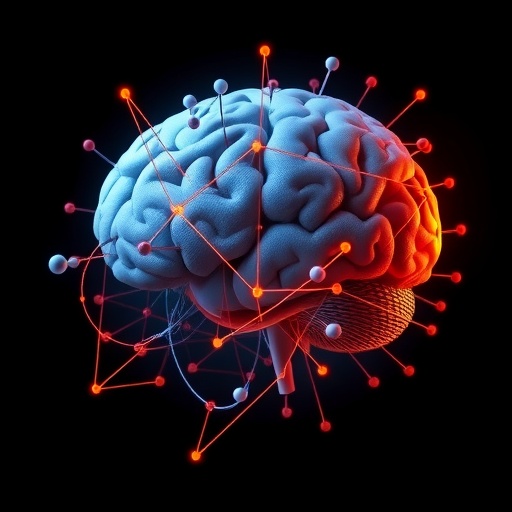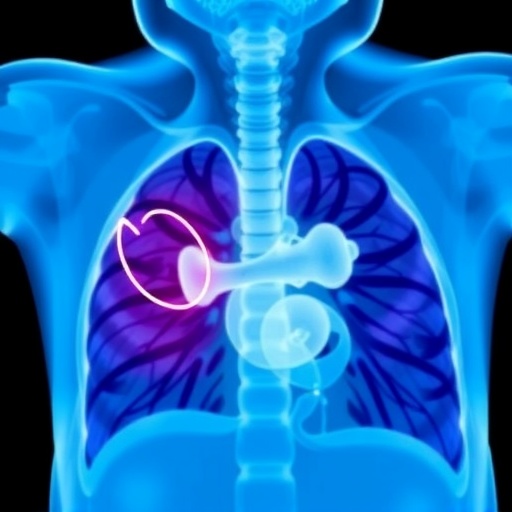
In the rapidly advancing field of neurotechnology, brain-computer interfaces (BCIs) have emerged as a beacon of possibility for restoring motor function, enabling direct brain control of external devices. Yet, despite remarkable progress, a persistent obstacle remains: the instability of these systems over extended periods. Recent work by Karpowicz, Ali, Wimalasena, and colleagues, published in Nature Communications, introduces a groundbreaking approach to address this challenge, focusing on stabilizing BCIs by aligning latent neural dynamics. This innovative method promises to revolutionize the way we interpret and harness brain signals, paving the way for more reliable and long-lasting neural interfaces.
Brain-computer interfaces translate neural activity into commands that control prosthetic limbs, cursors, or other external devices. These systems hold transformative potential, especially for individuals paralyzed by injury or disease. However, BCIs often grapple with “neural drift,” a phenomenon where the patterns of brain activity that the device interprets change over time. Minute shifts in electrode positions, neural plasticity, or physiological variability can cause latent neural representations to morph, undermining the consistency and accuracy of the interface. This renders many BCIs unreliable after a few days or weeks without frequent recalibration, drastically limiting their practical utility.
The crux of the new research hinges on understanding that the brain’s activity exists within a high-dimensional space of latent variables—hidden patterns underlying the raw neural signals. Instead of tracking every neuron’s firing, the researchers focused on the evolving structure of these latent dynamics, identifying invariant features resilient to day-to-day fluctuations. This conceptual shift from surface-level signal observation to deep latent alignment enables a more robust mapping between brain activity and device control, even when the measurable electrical signals have shifted.
To achieve this, Karpowicz and colleagues employed advanced computational frameworks rooted in machine learning and neural manifold alignment. By constructing a latent variable model of brain activity during task performance, they established a reference structure representing the underlying neural intentions. Subsequent neural recordings—taken days or weeks later—were then realigned to this original latent space, mitigating the effects of drift and preserving the functional consistency of neural representations. This dynamic alignment circumvents the need for repeated retraining or recalibration, a significant breakthrough.
Importantly, the study combined empirically recorded neural data from non-human primates with sophisticated simulations, ensuring robustness and generalizability of their methods. The authors designed a task where subjects performed repeated motor movements while neural activity was recorded through implanted electrode arrays. By comparing latent neural dynamics across sessions, they demonstrated that their alignment approach significantly improved decoding stability, maintaining high accuracy in predicting intended movements over extended periods.
Underlying this approach is the recognition that the brain flexibly reconfigures its activity yet maintains an invariant structure within a low-dimensional manifold that encodes behaviorally relevant information. By tapping into this manifold geometry rather than relying on noisy spike counts or raw firing rates, the researchers capitalized on a stable substrate within the neural code. This insight parallels emerging themes across neuroscience, emphasizing the importance of latent dynamics in cognitive and motor control.
Beyond immediate performance enhancements, this method implicates broader theoretical ramifications for understanding brain function. It suggests that even amidst biological variability and plasticity, the nervous system preserves a latent architecture that supports consistent motor commands. Exploiting this hidden constancy transforms how we design brain-machine interfaces, shifting focus towards capturing the brain’s intrinsic computational geometry rather than superficial signal features vulnerable to change.
Technically, the alignment procedure integrates manifold learning algorithms with domain adaptation techniques, borrowing concepts from computer vision and speech recognition fields where aligning latent spaces across contexts has proven successful. The researchers tailored these tools to neural data’s peculiar characteristics: high dimensionality, temporal correlations, and noise. They also optimized the approach to operate in an unsupervised manner, meaning it does not require labeled data or recalibration trials for each new session, enhancing its clinical viability.
Furthermore, the team delved into the biophysical sources of neural drift, investigating how electrode micro-movements, tissue responses, and synaptic remodeling contribute to signal instability. By modeling these factors, they fine-tuned their alignment algorithms to accommodate expected perturbations, ensuring resilience against real-world physiological changes. This comprehensive strategy bolsters the promise of their approach translating from controlled laboratory environments to practical human applications.
One of the most exciting implications of this work is its potential to extend the lifespan and usability of implanted neural devices. Current BCI users often face the burden of frequent recalibration sessions, diminishing user experience and hindering continuous use. Stable latent alignment empowers interfaces to remain accurate and responsive over months or even years, fundamentally changing the viability of neuroprosthetic technologies for daily life support.
Moreover, this methodology opens new avenues for adaptive closed-loop systems, whereby BCIs can adjust in real-time to neural plasticity or learning effects without external intervention. By continuously monitoring and aligning latent dynamics, interfaces might autonomously track and compensate for evolving neural states, substantially enhancing robustness. Such adaptability is critical for applications involving complex or naturalistic movements, where neural representations naturally evolve.
The research team also highlights that while their work focuses on motor BCIs, the principles of latent dynamics alignment could generalize to other domains such as sensory prosthetics, neurofeedback systems, or even psychiatric neurotechnologies. Any interface reading neural patterns susceptible to temporal drift could benefit from latent space realignment, broadening the scope of impact across clinical neuroscience.
Collaboration between neuroscientists, engineers, and computational scientists was vital to realize this achievement. The interdisciplinary approach melded theoretical insights from systems neuroscience with cutting-edge algorithmic design and rigorous experimental validation. This synergy exemplifies the direction of modern neurotechnology research, where bridging multiple fields can overcome longstanding technical hurdles.
Looking forward, the authors acknowledge challenges in scaling the technique to larger neuronal populations and human subjects. Recording stability and integration with existing clinical devices remain active areas of investigation. Nonetheless, the demonstrated proof of concept marks a significant milestone, inspiring further work to translate latent alignment strategies into practical neuroprosthetic solutions enhancing quality of life.
In summary, this transformative study sheds light on the complex yet orderly structure that underpins brain activity and reveals an ingenious strategy to stabilize BCIs by aligning their latent dynamics. Through sophisticated computational modeling and empirical validation, Karpowicz and colleagues provide a robust framework to tackle neural drift, promising to extend the reliability and longevity of brain-computer interfaces. This advance stands to unlock new frontiers in restoring motor function and empowering individuals through seamless brain-controlled technologies.
As the pace of neurotechnology accelerates, innovations like these underscore the critical role of understanding the brain’s fundamental computational principles. By capitalizing on the brain’s stable latent manifolds, we edge closer to neural interfaces that are not only more efficient but fundamentally more attuned to the dynamic nature of biological systems. The future of brain-machine communication appears brighter, driven by the elegant alignment of hidden neural dynamics.
Subject of Research: Stabilization of brain-computer interfaces through alignment of latent neural dynamics
Article Title: Stabilizing brain-computer interfaces through alignment of latent dynamics
Article References:
Karpowicz, B.M., Ali, Y.H., Wimalasena, L.N. et al. Stabilizing brain-computer interfaces through alignment of latent dynamics. Nat Commun 16, 4662 (2025). https://doi.org/10.1038/s41467-025-59652-y
Image Credits: AI Generated
Tags: aligning latent neural dynamicsbrain-computer interfaces stabilizationinnovative approaches in neuroengineeringlong-term reliability of brain interfacesNature Communications research on BCIsneural drift in BCIsneurotechnology advancementsovercoming BCI recalibration challengesphysiological variability in brain activityprosthetic control through brain signalsrestoring motor function with BCIstransformative potential of neurotechnology





